Ask John: What Are the Overlooked Gems of the Past Decade?
Question:
Having recently listed my nominations of the finest anime television series from 2000 to 2010, I thought that a similar list of the decade’s most unrecognized and under appreciated TV anime would be an appropriate follow-up. These are the past decade’s interesting, unusual, exceptional shows that I’d personally recommend to American fans longing for contemporary anime looking for buried treasures and worthwhile shows just a bit off the beaten path.
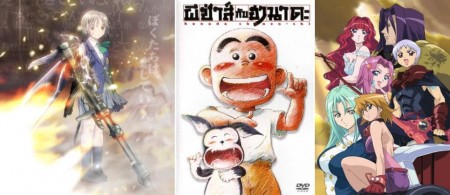
Saishu Heiki Kanojo feels like Gonzo’s abandoned and forgotten child. Despite having been released on domestic DVD twice by Viz Media, it’s been out of print in America for several years now. This relatively mild and understated TV series packs a devestating emotional blow founded on strong characters and character relationships and a frighteningly plausible scenario. On a side note, the excellent television series is also supplemented by a totally unnecessary and disposable two-episode OVA series.
Also from 2002, Madhouse’s nostalgic, rural ghost story comedy Hanada Shonen-Shi may be too lacking in contemporary anime tropes and obvious chic style to appeal to fans preoccupied with action and tres cool alternative chic. However, viewers looking for an alternative to today’s cliche, repetitive themed anime should enjoy this fun tale about a country boy who gains the unwanted ability to see and communicate with ghosts.
The Gainax co-produced 2004 TV series Boukyaku no Senritsu: The Melody of Oblivion earned a small fan following during its broadcast, but it’s been largely disregarded. Geneon released the series on domestic DVD, but it’s been out of print in America for a number of years. This very odd sci-fi adventure seems to combine inspirations from Utena, B’t X, sentai hero shows, horror movies, and fairy tales into a bizarre hybrid that manages to actually work. The show is constantly just a bit off-putting because it’s so weird, but it’s also precisely that bizarreness that makes it so interesting.
The visual design of the Fuujin Monogatari television series is what immediately makes the show so distinctive, and, in fact, is the major distinguishing characteristic of the show. While the series revolves around the interesting concept of schoolgirls, and cats, that learn how to manipulate the wind, that story angle is somewhat marginalized in favor of slice-of-life engaging but mundane drama. The story, with its art that resembles paper cut-outs, allows viewers to get to know its characters and setting intimately with a pleasant, relaxing pace.
2005’s Gallery Fake television series is typified by alternating good and bad or ridiculous episodes, but the entirity of the show is characterized by an unusual concept. This show about a discraced art expert who openly trades in black market and counterfeit art regularly revolves around real-life art history. Viewers that complain that all contemporary anime is redundant fan service simply fail to consider unusual shows like Gallery Fake that absolutely refute that assessment.
Children’s anime faces a love-it-or-hate-it reception in America. Cultish followers are devoted to Yu-Gi-Oh, Digimon, and Pokemon while the majority remainder of American fans ignore or abhore children’s anime. So it’s no surprise that the 2005 Kochu Ouja Mushiking television series is entirely unknown in America. This stylish fantasy series is highly unusual because it develops with a calm restraint rarely found in any anime and especially rare in children’s anime. This is children’s adventure anime by way of almost art film atmosphere.
Fans of Death Note should certainly bet on Tohai Densetu Akagi. This intensely addicting gambling drama depicts a devil among demons, a genius gambler so adept at manipulating his opponent’s psychology that parlor games take on literal life and death stakes. Protagonist Akagi is absolutely fascinating because he’s so charasmatically evil. Witnessing excellence in action is instinctively compelling. In this case, viewers don’t watch good triumphing over evil. Rather, we see an ever escalating battle of wits in which the winner is the one who is most insidious, devious, calculating, and ruthless.
Conventional bishoujo anime seem an unlikely choice for the company of unusual and exceptional anime, but 2006’s Renkin San Kyu Magical? Pokaan deserves mention. This highly engaging slice-of-life story about a vampire girl, werewolf girl, witch, and cyborg girl roommates trying their best to live a happy and peaceful life in contemporary human society is marked by unusually good animation quality and an unusual amount of charm.
Educational and especially didactic anime are rarely fully entertaining, but the 2006 Shibawanko no Wa no Kokoro series is very interesting because it’s so unusual. This simply animated series teaches traditional Japanese ettiquete with narration and illustration performed by a proper and polite shiba dog. Simply seeing Japanese ettiqute, which is so vastly different from American manners, is fascinating. Seeing it explained and performed in anime is even more interesting.
Thankfully the 2007 Oh Edo Rocket historical fantasy will soon be available on domestic DVD. This very eclectic hybrid of genuine Japanese history and the Japanese Kaguya Hime fairy tale is so vividly, energetically, thoughtfully, and exceptionally depicted that it’s immediately absorbing. The show looks like absolutely nothing else. It’s animated very well. And it’s so unpredictable and eclectic that it’s a perfect cure for common anime.
The fact that Shion no Oh stars a mute protagonist immediately means that it must adopt a unique narrative approach. This absolutely fascinating suspense drama is equal parts tense shogi competition anime and murder mystery that’s consistently intelligent, surprising, and unpredictable. Viewers seeking a smart, nuanced, compelling, suspenseful drama need look no farther than this.
While BONES is well known for its high profile shows including Wolf’s Rain, Fullmetal Alchemist, and Soul Eater, the studios smaller and more intimate titles like Kurau and Nijuu Menso no Musume may be its finest works. The historical fiction adventure Nijuu Menso no Musume is a fully engaging story about a driven young girl growing up through unusual and perilous times and situations. The show’s depiction of protagonist Chizuko Mikamo growing up and becoming more self-confident, intelligent, and capable is both rewarding and exciting.
Production I.G and Masamune Shirow’s first of two collaborative creations, Shinreigari ~ Ghost Hound, got a lot of attention but really wasn’t especially good. Inversely, RD Sennou Chousashitsu got less attention but was excellent. This engaging work of speculative science-fiction combined intelligent concepts with great characterizations and exceptional animation quality. This show is one of anime’s greatest, most well executed “hard” sci-fi stories.
In 2007 Madhouse released its pretty bad American written Highlander: The Search for Vengeance anime movie. The following year Madhouse quietly released its own interpretation of the Highlander concept. Kurozuka is a breathtaking, stylish, extremely violent and bloody tale of a samurai given eternal life and cursed to chase after his immortal true love through the centuries. Kurozuka is a throwback to the dark, exhillerating action anime that Madhouse produced in the 80s and 90s – like Yoju Toshi, Cyber City, Midnight Eye Goku, and Jubei Ninpucho – produced with the finest of contemporary anime technique. Kurozuka is precisely the sort of anime that Americans seem to love, so its relative obscurity is baffling.
The 2010 TV special Shoka is a hybrid of Fujin Monogatari’s visual design, the concept and setting of 2006’s Tenpo Ibun Ayakashi Ayashi, and the action of the R.O.D. OVA series. It’s every bit as exhillerating as that summary sounds, and if it has any flaw, it’s that it’s too short and has no expansion, spin-off, or sequel.
Add a Comment
You must be logged in to post a comment.
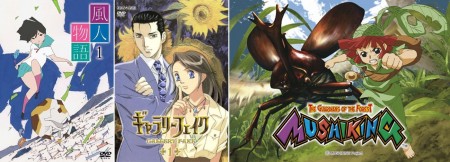
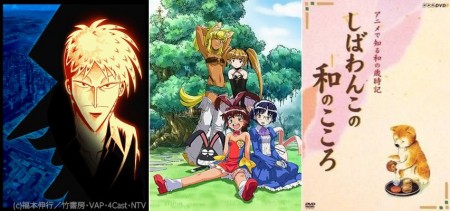
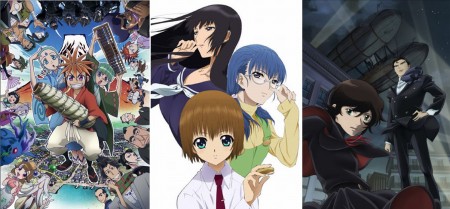
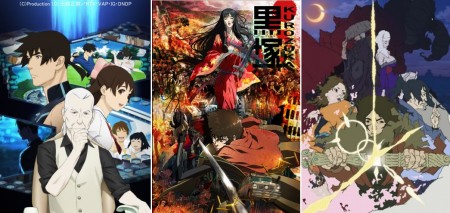



I love MELODY OF OBLIVION, and started re-watching it recently. There’s a huge heaping of cheesiness in this anime, but if you’re able to suspend your disbelief just enough to accept that robot monsters, monkey people, and youthful phantasm deities can exist, then you’ll have a blast watching the series, and have a blast engaging its characters as well.
is there any place to find these gems so we may enjoy them legally?
Saikano is readily available on Netflix, and that goes for Melody of Oblivion and Ghost Hound as well
In my opinion, The Melody of Oblivion is not only the most underrated show of the past decade. I’d actually place it in my top ten favorite shows of the ’00s. It’s every bit as unusual, provocative and full of symbolism as its spiritual predecessor, Utena, which was made by the same studio, head writer and character designer. The last two episodes are especially brilliant.
Nice to see Real Drive: Sennou Chousashitsu get some love, too. I hope it gets licensed in the US someday.
i tried to find all these online….better late than never?….http://www.anilinkz.com/renkin-3-kyuu-magical-pokahn/renkin-3-kyuu-magical-pokahn-episode-1/…..http://www.animeseason.com/nijuu-mensou-no-musume-episode-1/…melody of oblivion at crunchyroll.com…..http://www.anilinkz.com/category/real-drive/…..edo rocket a hulu.com……http://www.anilinkz.com/category/kurozuka/…….http://www.anilinkz.com/category/shion-no-ou/……..http://www.anime-sub.com/watch/category/hanada-shounen-shi…..http://www.anime-sub.com/watch/category/nijuu-mensou-no-musume…..http://www.zomganime.com/anime/Shoka….missing a few still